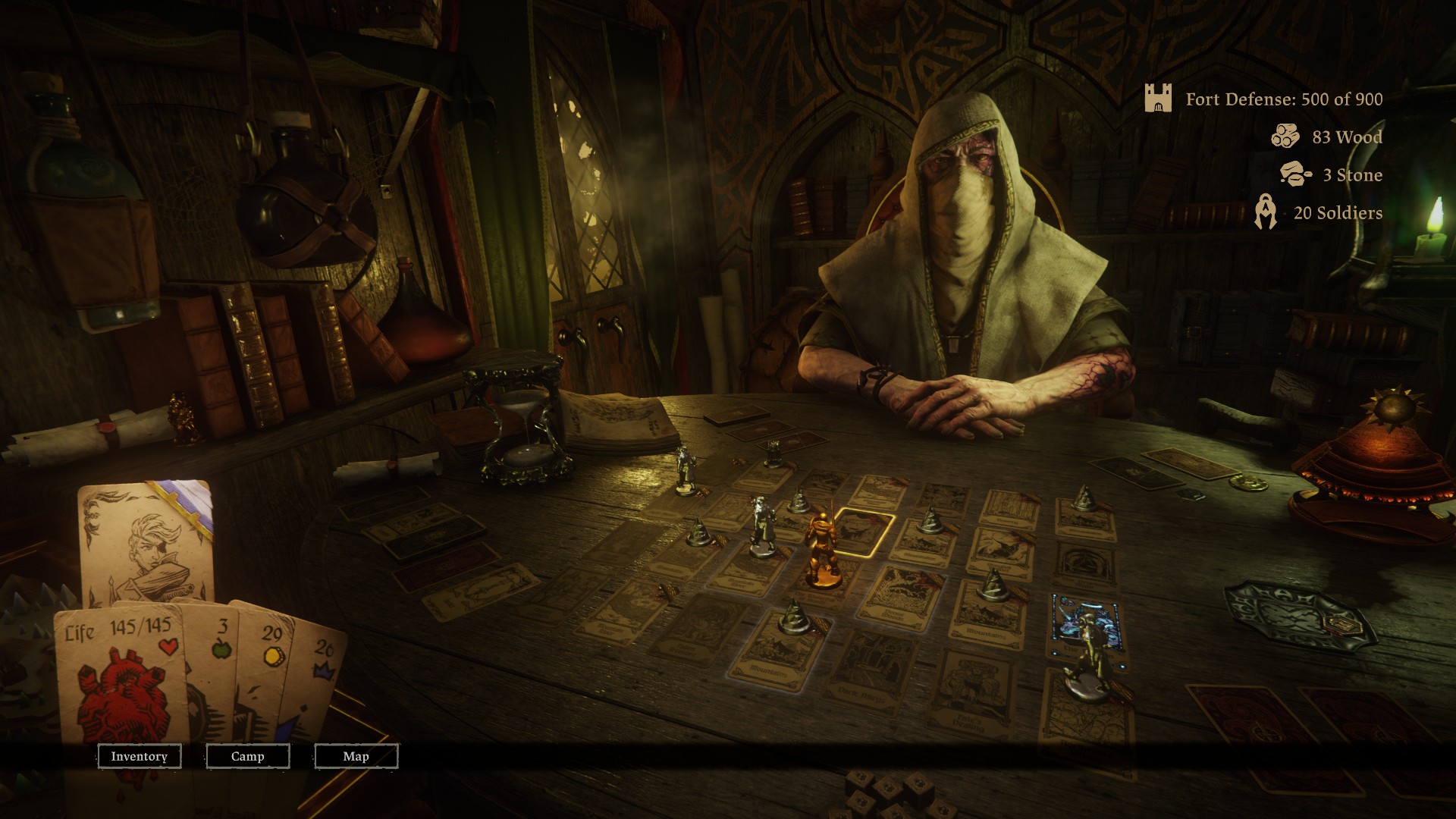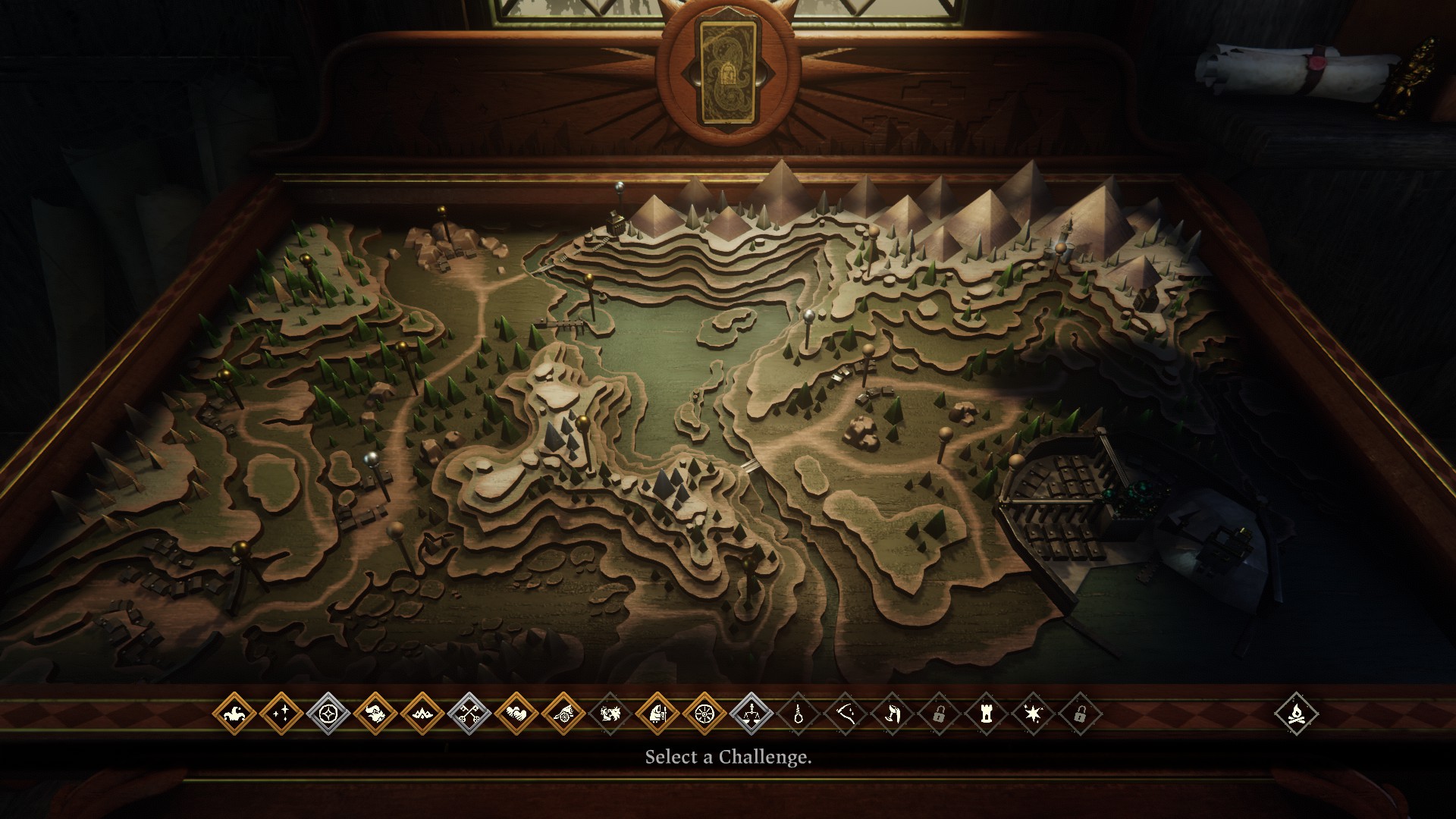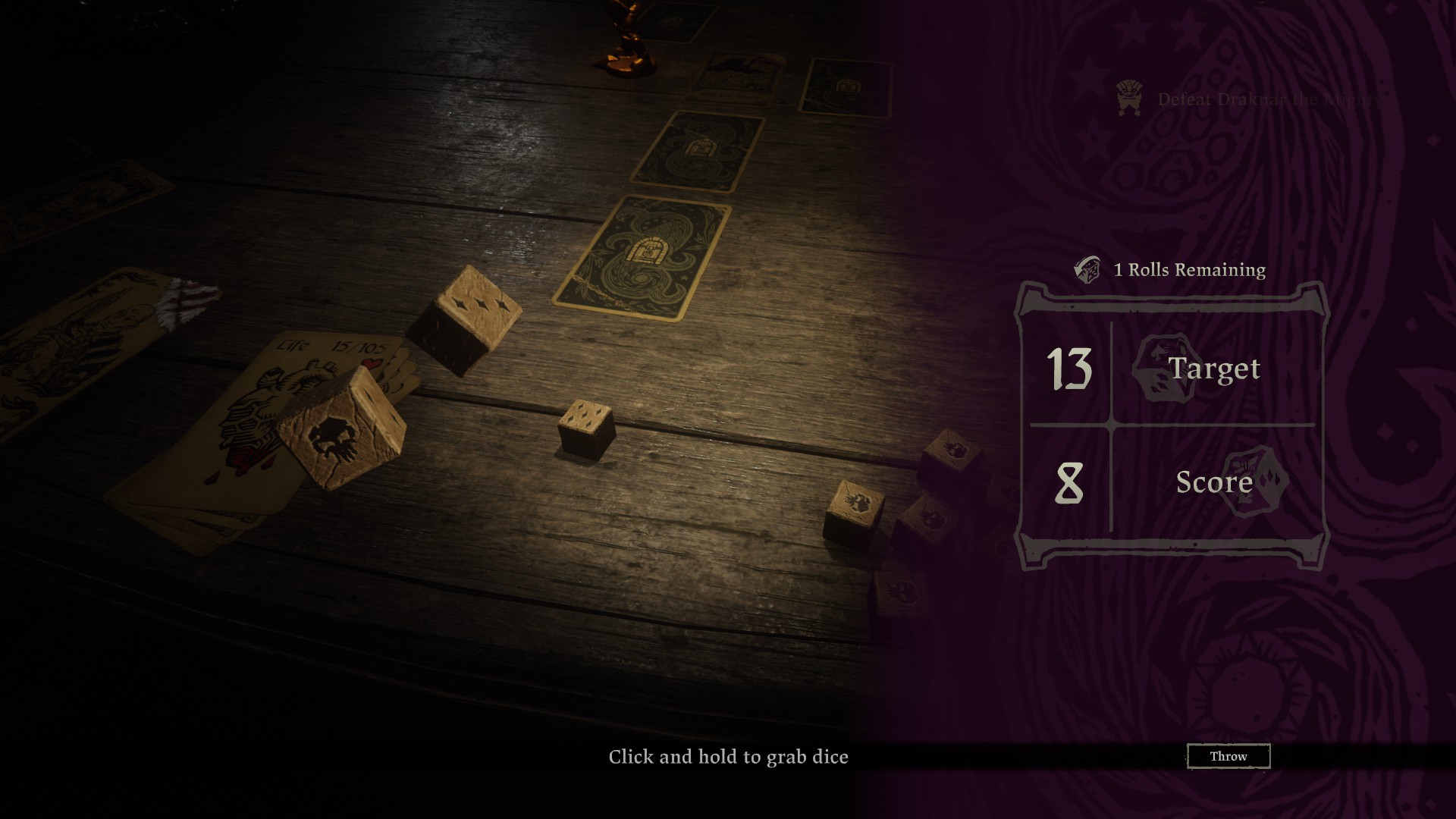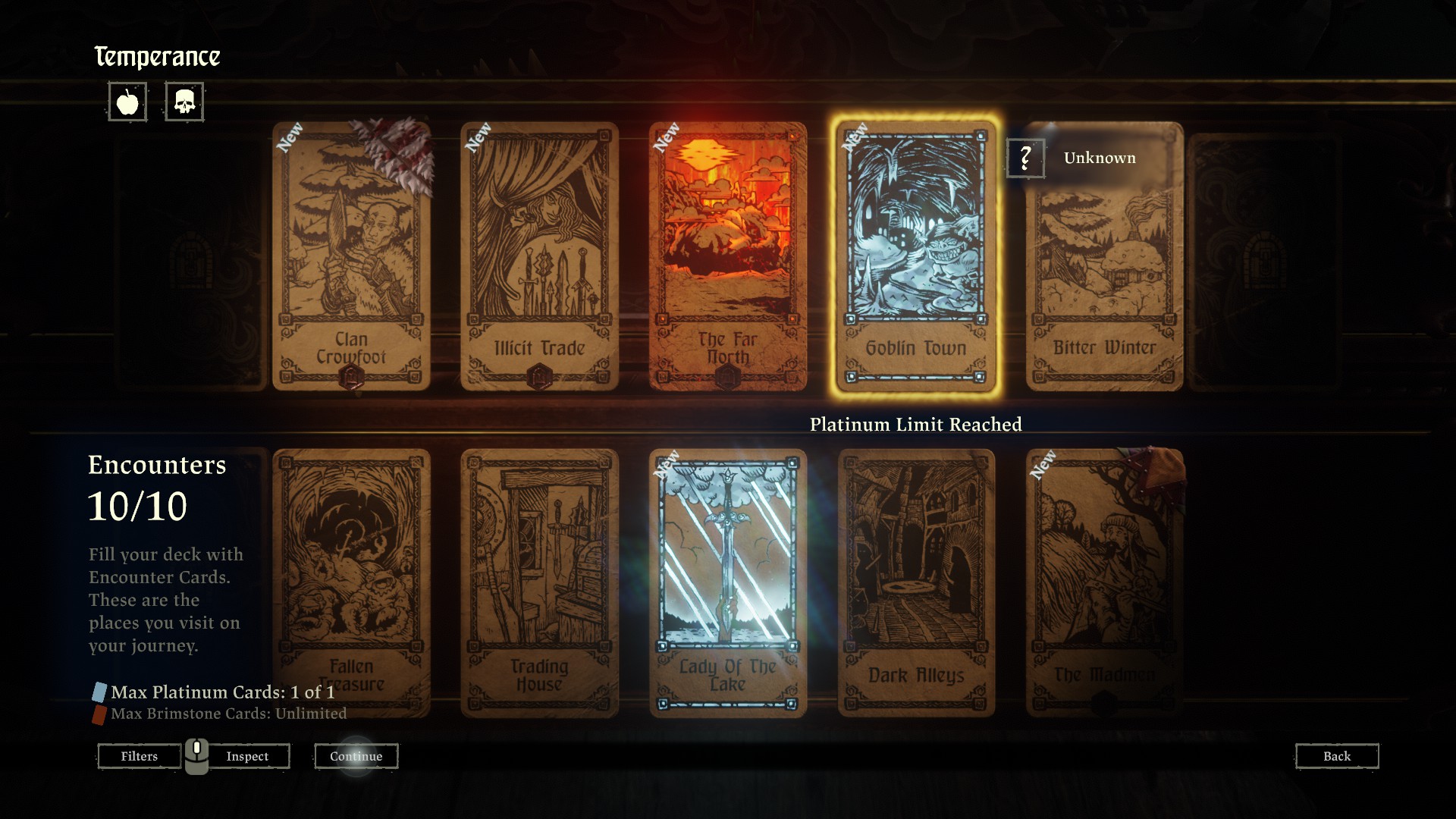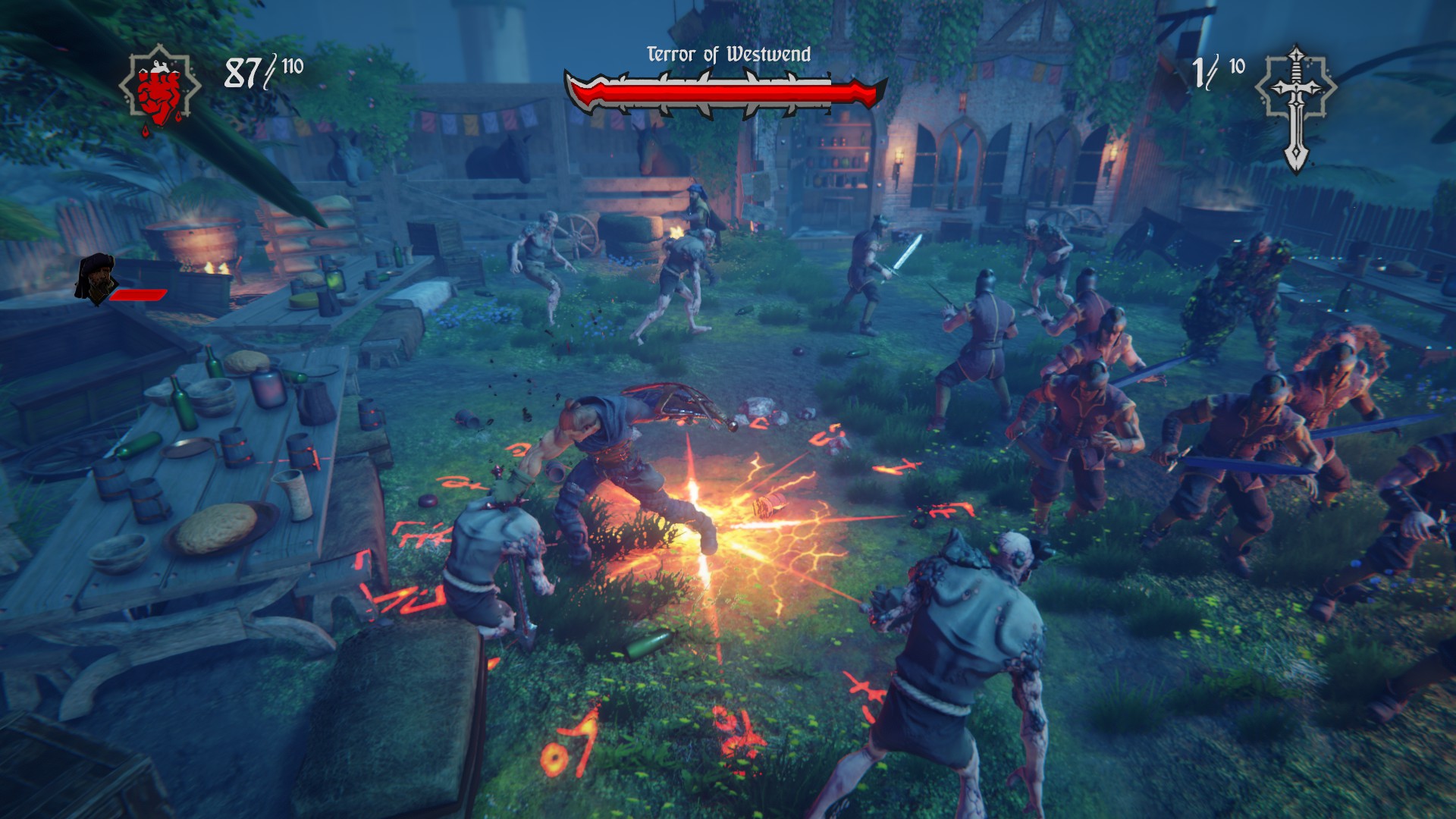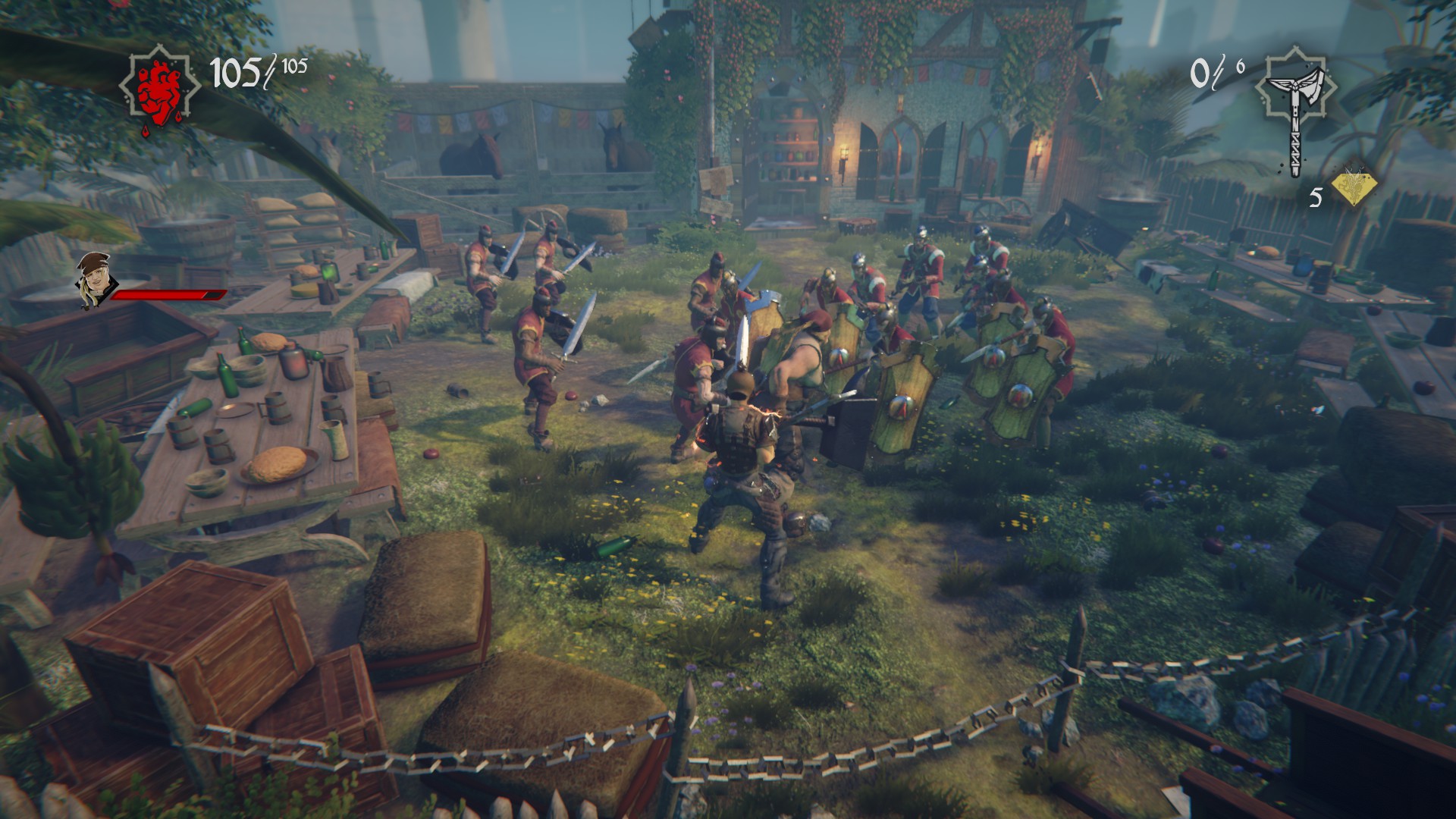Our Verdict
Hand of Fate 2 is a satisfying sequel and a meatier dungeon crawler, but still somewhat hampered by limited combat.
PC Gamer's got your back
What is it? A rogue-like, dungeon-crawling, deck-building RPG.
Reviewed on: Windows 10, AMD FX-8350, 8GB RAM, GeForce GTX 960
Price: $30/£25
Release date: November 7
Publisher: Defiant Development
Developer: Defiant Development
Multiplayer: N/A
Link: Official site
My Fame score was too high. When I drew the Infamous card again, I was faced with a choice: fight my way out of an angry mob of peasants, or submit to a trial by fire. I opted for the latter and was presented with a rotating beam of light along a pendulum of moving blocks. When I failed to stop the marker on the right block, the Dealer cackled with glee. My heart sank as he drew Pain card after Pain card and my health dwindled into nothing. I should have murdered the damn peasants.
Hand of Fate 2 is, like the original, a world literally made of cards. The campaign is presented as a world map divided into 22 challenges, or levels. These challenges provide specific objectives, and rules, and dying fails the entire challenge. Each challenge places a series of cards facedown on the table, like a digital board game. You move your token from card to card with each one revealing a new encounter that could mean potential gold, food, loot, or combat.
The mysterious robed figure known as the Dealer returns from the first game, bearing scars he earned from it. He still introduces each challenge with acerbic wit, mocking every failure and adding a colorful level of commentary to each card I encountered. Oddly, the Dealer ends up a bit sidelined this time around, as the storytelling in the cards themselves has been greatly enhanced.
The outcome of nearly every card is determined by either a mini-game of dice, cards, or dexterity, or a battle in a combat arena. Most cards offer interesting choices and different levels of risk and reward, from deciding whether to help or capture a thieving child to playing multiple games of chance with an ogre—or just fighting him instead.
RPGs using dice rolls is not exactly a new concept, but it's new for Hand of Fate. The sequel smartly expands by adding multiple games of chance and dexterity to its unique card-based series of dungeon crawls. Additions like this make Hand of Fate 2 feel like a much improved sequel.
Each challenge you unlock presents a different storyline with unique cards, rules, and objectives. I was impressed with how deeply some of them could alter the game.
Companion cards are one of Hand of Fate 2's best new features
One challenge tasks me with gathering resources to defend a fort from a never-ending barbarian horde. It transformed into a turn-based strategy game as I avoided enemy patrols, discovered secret paths, and worked to efficiently gather wood and stone, all while still traveling between cards across the table.
Keep up to date with the most important stories and the best deals, as picked by the PC Gamer team.
A particularly difficult challenge crippled me from the very beginning, leaving me with only 10% health and no way to heal naturally. I failed again and again, finally returning later once I had completed other challenges and acquired better healing and life gain cards to add to my personal deck. Unlocking new cards and strategically building my personal deck for each challenge remained satisfying throughout the campaign.
Companion cards are one of Hand of Fate 2's best new features. There are four in total, unlocked over the course of the game. Each is unique, wielding useful powers in combat and on the strategic layer. Colbjorn the barbarian, for instance, can unleash an effective stunning charge in combat. On the card screen he can add an additional die to any dice rolls, which was often the difference between success and failure.
I would be surrounded by a dozen units while they politely engaged me one at a time
Companions’ stories are told through a series of companion-specific cards, compelling tales of heartbreak, betrayal, and redemption. Companions are also woven into other cards’ stories and frequently chime in during BioWare-style cutscenes. These moments made the world feel much more vibrant and interactive despite how much of it is text.
The last few challenges are a gauntlet of dungeon crawls as my team and I infiltrate a palace to embark on a little regicide. The finale presents its consequences based on how well you completed your companions’ storylines, kind of like Mass Effect 2. The final battle has a neat twist (and thankfully nothing like the awful QTE slog the first game’s end boss was), but still ultimately came down to a standard combat arena.
Combat is unfortunately the least improved aspect of the sequel, despite still being a major focus of many challenges and cards. When you happen upon enemies the strategic card layer shifts into a colorful third-person action brawler. Weapons come in multiple styles which are now designed to tackle specific enemy types, such as light weapons against thieves. Each weapon has a built-in special attack that can be activated after a certain number of combo hits, with more powerful weapons capable of stunning multiple enemies or delivering massive blows. Attacks can either be blocked or evaded, and you’ll know which to use depending on if the attacking foe glows green or red.
Enemy types are fairly limited and largely unimpressive, from standard barbarians, soldiers, and ghouls to a few interesting things like giant ogres and fire-spewing grenadiers. The arena background art and unit animations look great, but you’re still mostly just fighting humans in small spaces.
By the halfway point in the campaign I saw almost everything the Dealer would throw at me. Later bosses scale up with more HP and armor, and regular enemies mostly rely on large numbers to offer any amount of challenge, which leads to awkward Teenage Mutant Ninja Turtles-style enemy fights in which I would be surrounded by a dozen units while they politely engaged me one at a time—an issue which plagued the first game as well.
At its best the rhythm of combat can be exhilarating. Many of the final battles in each challenge left me with a sliver of health as I quickly dodged to deliver the final blow, knowing that falling here would cause me to fail the entire 30-45 minute challenge. But in reaching that point most fights grew repetitive, particularly if I hadn’t yet found a decent weapon. It takes too long to kill anything even with the upgraded starting weapons, and you never have many options beyond frantically clicking, dodging, and occasionally unleashing your weapon ability or artifact. I also constantly struggled with the annoying fixed camera and auto-targeting. It never felt like I had firm control over my character.
Weak combat would be a killer for most RPGs, but Hand of Fate 2 more than makes up for it in the vastly improved strategic layer, and lovely storytelling. The deck-building strategy remains satisfying and the new variety of challenges adds a roguelike replayability to obtaining the gold rank for each one. If the first Hand of Fate was an interesting but flawed proof of concept, Hand of Fate 2 is a fully realized version of that deck-building dungeon-crawler.
Hand of Fate 2 is a satisfying sequel and a meatier dungeon crawler, but still somewhat hampered by limited combat.
